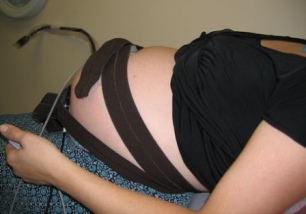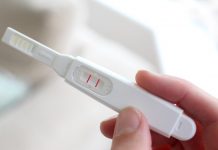The fetal non-stress test is a very simple and non-invasive procedure performed when you are 28 weeks pregnant.
So named because it ensures no stress is placed on your fetus during the test, and it also helps to evaluate your baby’s condition.
The procedure involves monitoring of your baby’s heartbeat in order to ensure that s/he is getting sufficient oxygen levels through the placenta.
The heartbeat is recorded both when the baby is resting and also when s/he is moving. Usually, the baby’s heartbeat is recorded as high when s/he is moving or kicking.
Typically, the test is performed if you are in post-date pregnancy or if you have a high-risk pregnancy, in the month before the due date [pregnancy due date].
Reasons against non-stress test:
- If you are suffering from diabetes and being treated with regular insulin, high blood pressure or any other medical issues that keep your pregnancy at high risk.
- If you suffer from gestational hypertension;
- If your baby is under-sized and not growing enough;
- If the baby is inactive than normal;
- If the level of amniotic fluid is high or even too low;
- If you have undergone procedures like amniocentesis test or an external cephalic version. After undergoing these procedures, your practitioner will recommend a non-stress test to ensure that your baby is doing well.
- If you are in post-date pregnancy and your doctor wants to observe your baby’s growth because of prolonged life in the womb.
- If you have lost a baby in a previous pregnancy, during the second half of the pregnancy or if the same problem repeats in your current pregnancy, a non-stress test should be performed as early as 28 weeks.
What the test involves?
Usually, the test is performed in the practitioner’s office. You are required to sit in a chair or lie on a table with fetal monitoring equipment attached to your abdomen. This monitor records your baby’s heartbeat in combination with any uterine cavity.
You are then asked to press the button on the fetal monitoring equipment when the baby moves so that the heart rate can be recorded in relationship to the baby’s movement.
What do the results mean?
If the baby is moving and active, his/her heart beats faster by at least 15 beats per minute. This will be observed for at least 15 seconds at a time. In order to confirm that your baby is normal or reactive, this activity should be observed at least twice in the duration of 20 minutes. The test is considered abnormal or non-reactive when the baby is not moving much.
If the test is done early during the third trimester, it can give false positive results. If the test is done between the 24th and 28th weeks, 50% of the cases show false results. Therefore, make sure you have the test done between 28 and 32 weeks.






